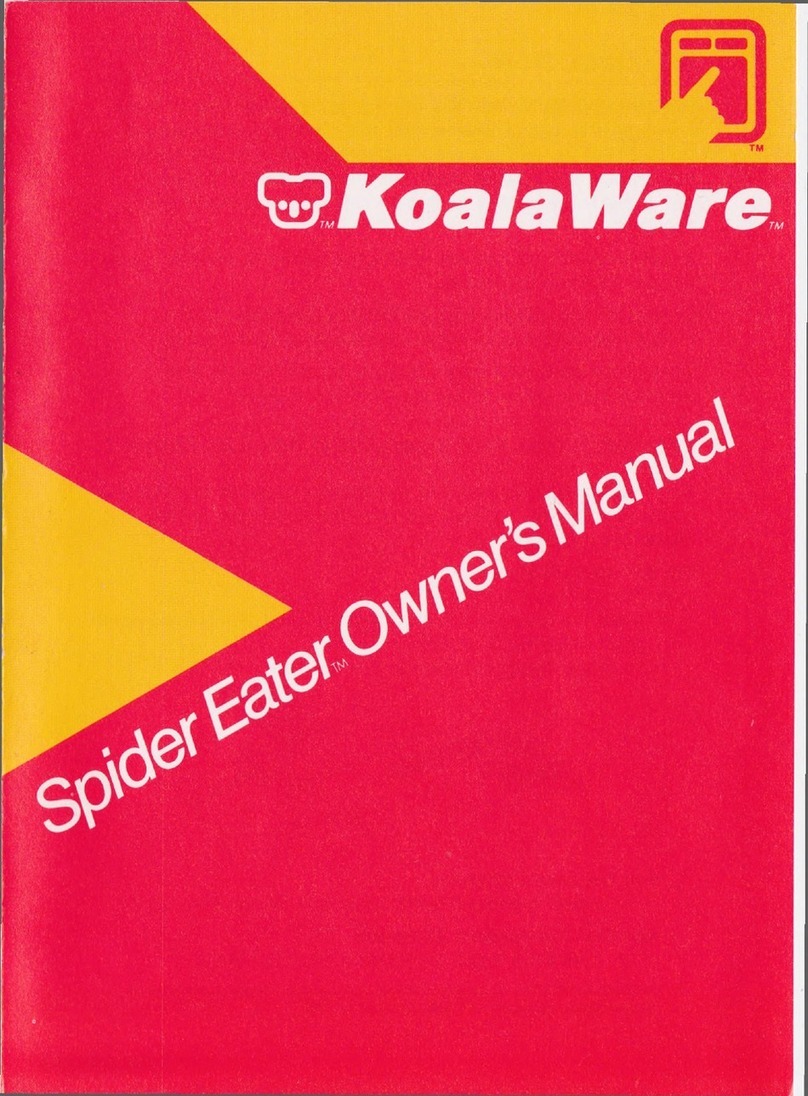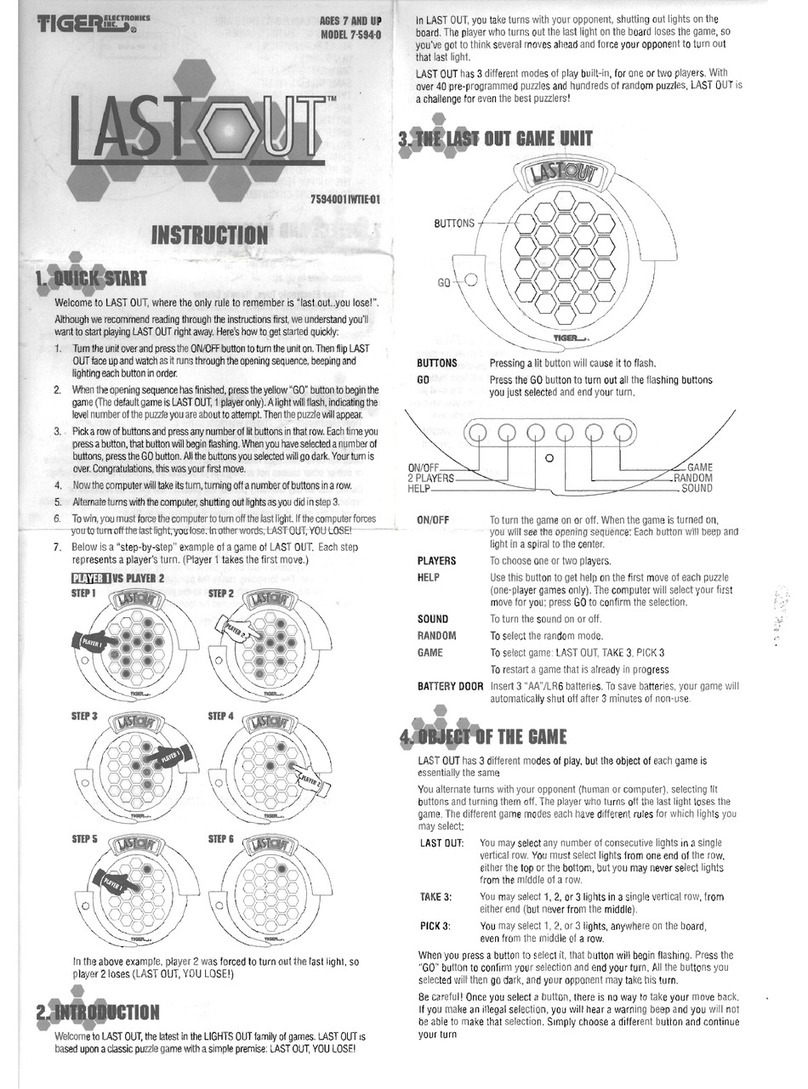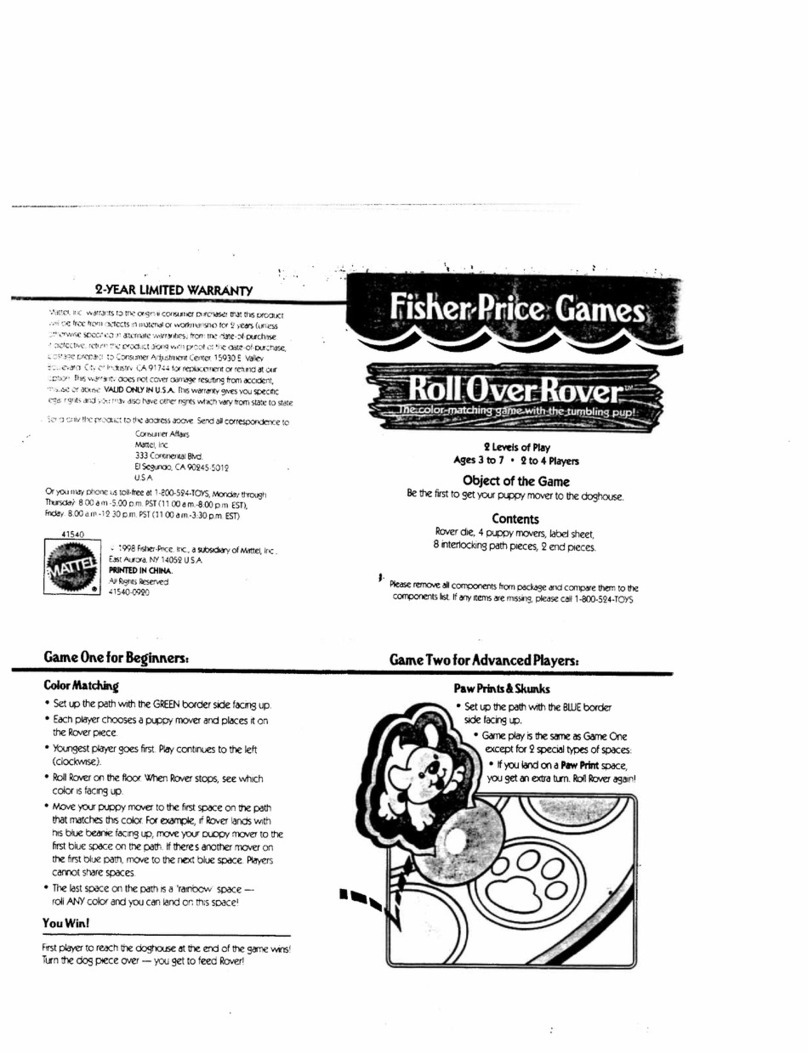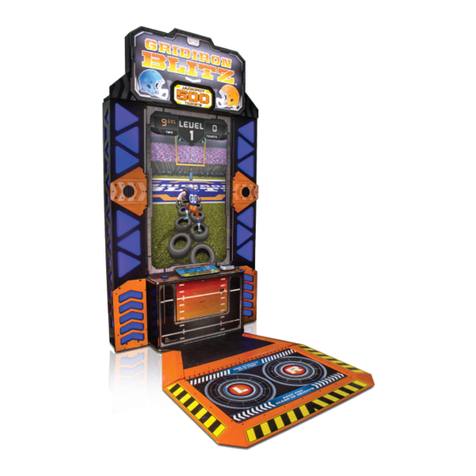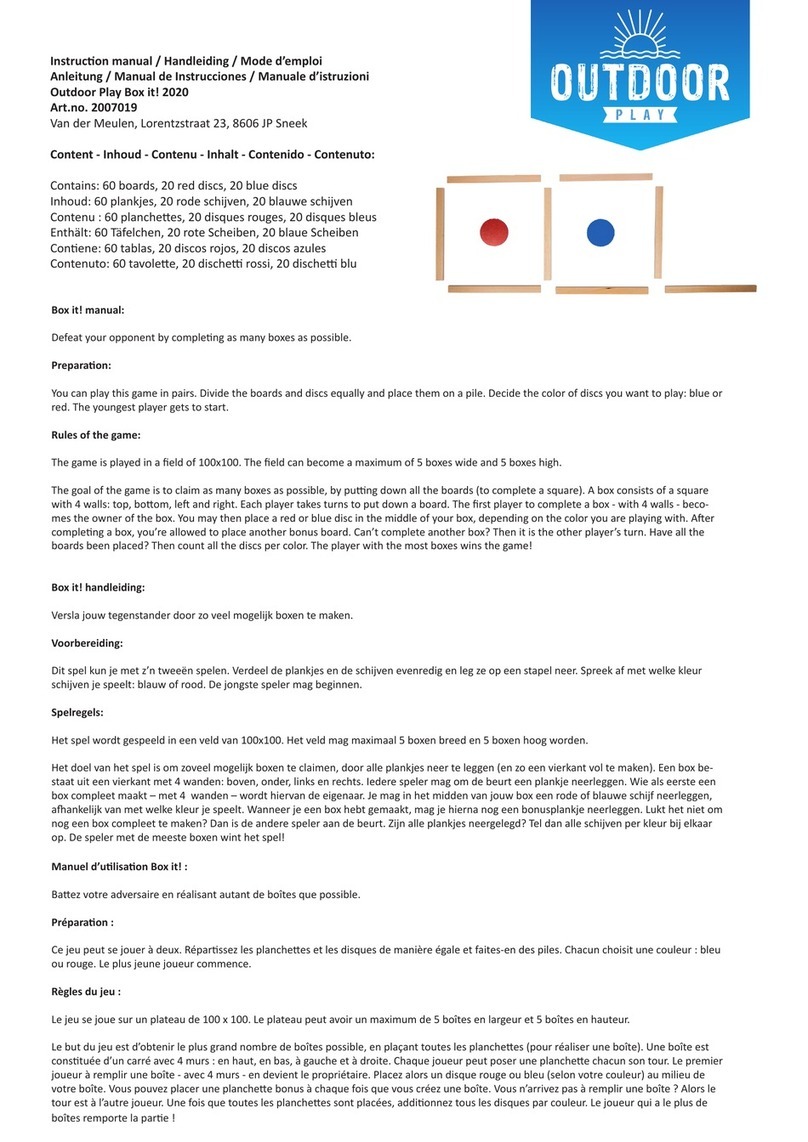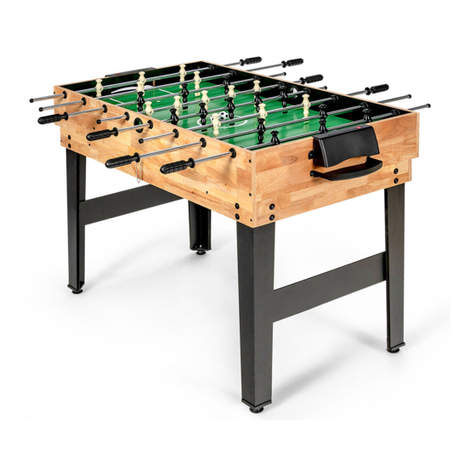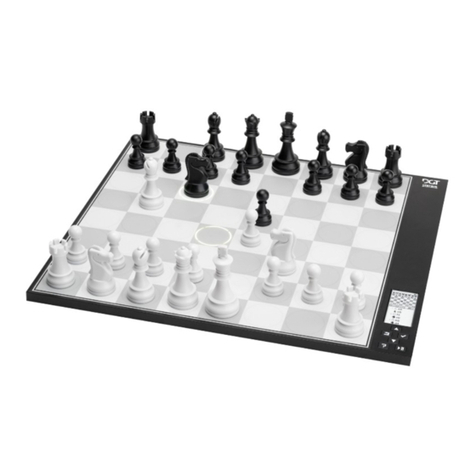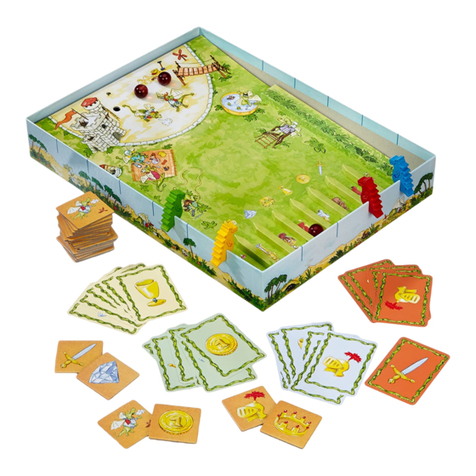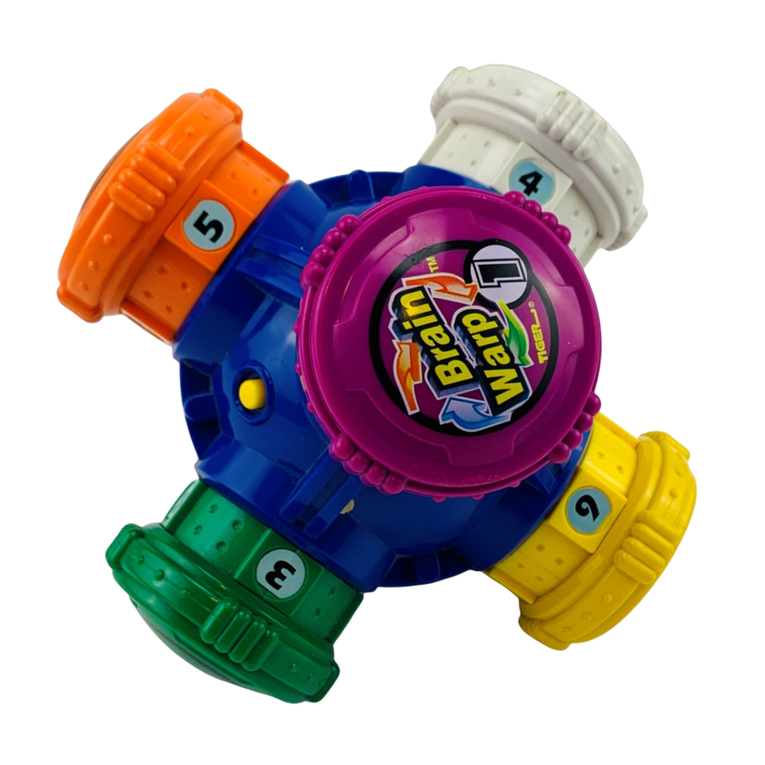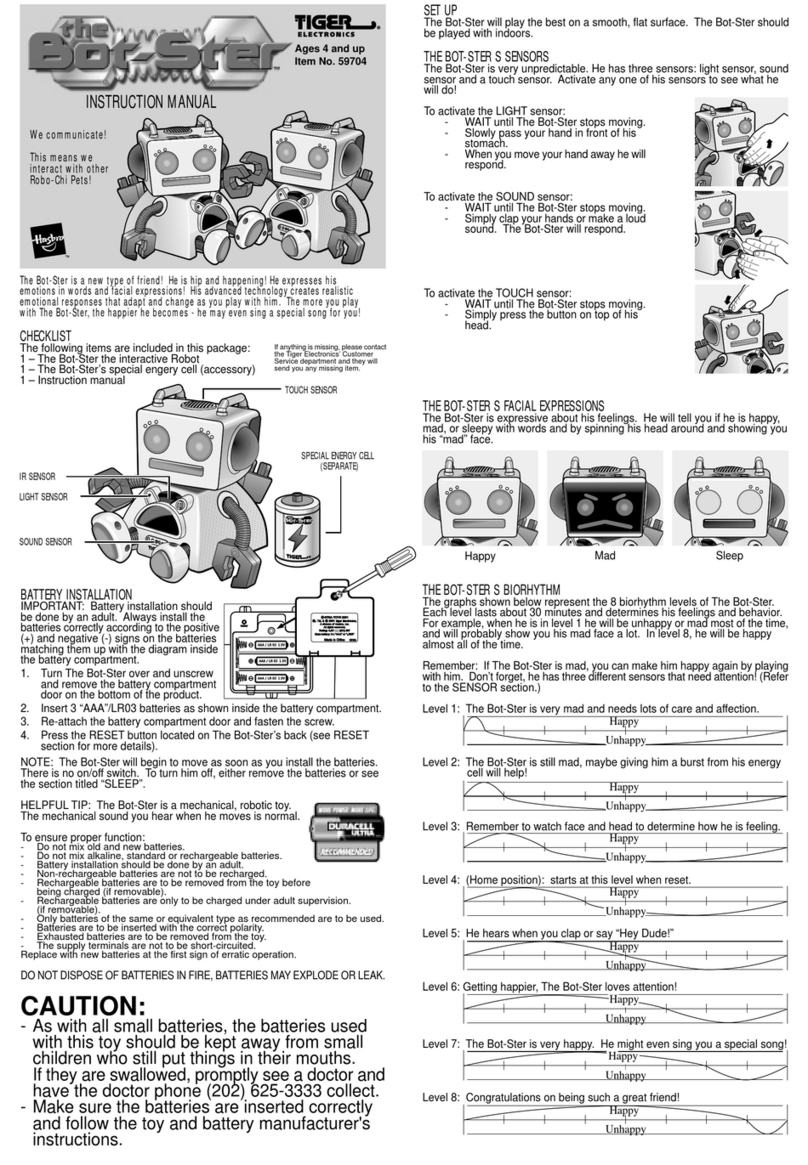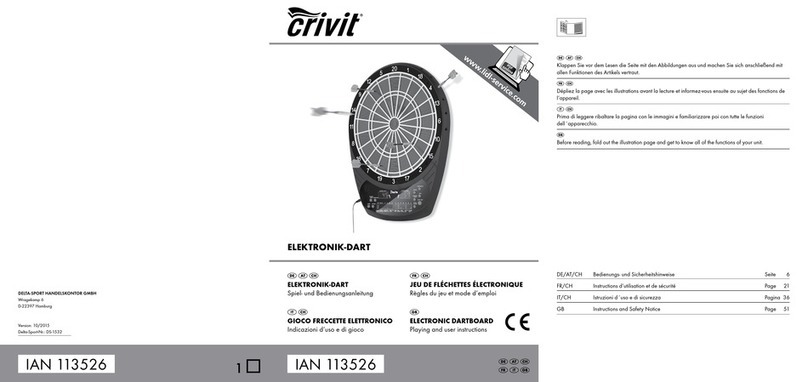
1.5 Initial Operation
Connect the mains supply and switch ON (Ref: Section 1.3).
The Top-Sign and coin entry fluorescent lamps will light, the top sign Nascar lamps will
sequence.
The pusher boxes will start moving.
Each reel will align its datum and rotate to its starting position.
The hoppers will run to clear any stray coins. Please check for foreign objects before floating.
A short time latter the 'Attract' sound will operate depending on the switch settings on the Sound
Board. The volume level may be adjusted if required by means of a volume control fitted on the
Sound Board. This is located in the left hand lower cabinet on the central web.
Insert a coin in to the coin entry chute; a sound will be heard as the coin is accepted. The
corresponding section coin-in counter will increment and the player section will become active.
The game is now initiated and will remain so for approximately 20 seconds.
The anti abuse 'slam-tilt' alarm feature may be tested by thumping on a lower cabinet door. The
alarm should sound, and the top sign lights go out. The count hopper will run, diverting any
coins falling from the playfield into the cashbox. The count output from this hopper is ignored
during tilt conditions, thus no awards made. The operation of the tilt or slam tilt alarm stops all
games in progress and lasts approx 10 seconds.
A safety feature is incorporated which will stop the pusher drive motor should a jam or
restriction occur. Simply holding back an advancing pusher box may test this. To effect reset of
this feature, operate the reset switch located on the rear of the right hand cabinet.
2.1 Access To Machine
WARNING - DANGEROUS VOLTAGES EXIST WITHIN THIS MACHINE
Playfield
Release the lock at the top of the glass and hinge backward far enough to get a firm
handhold either side. Carefully lift clear of the machine and store safely.
Coin-Entry
Release the locks at the top of the door and hinge down.
Lower Cabinet
Release the locks, hinge outward, disconnect cables at connectors and lift clear.
Cashbox
Release the lock at the top, hinge outward, and lift clear. The cash box is located within.
Top-Sign
Release the lock on the rear door and lift clear.
From the front, the artwork panel may be unscrewed and removed.

